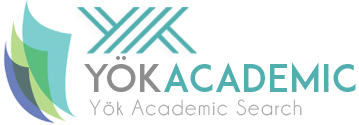Letter
Research Article
Issue Editorial Board
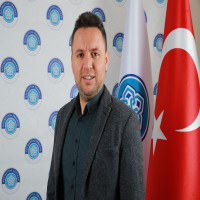
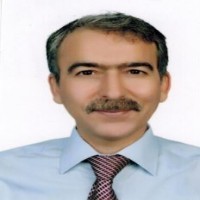
Özgen Korkmaz is a professor at the Faculty of Engineering and Natural Science at Bandırma Onyedi Eylül University. Dr. Korkmaz's area of expertise is educational technology. His research interests include computer education, programming education and thinking skills. He is also an expert in scale development.
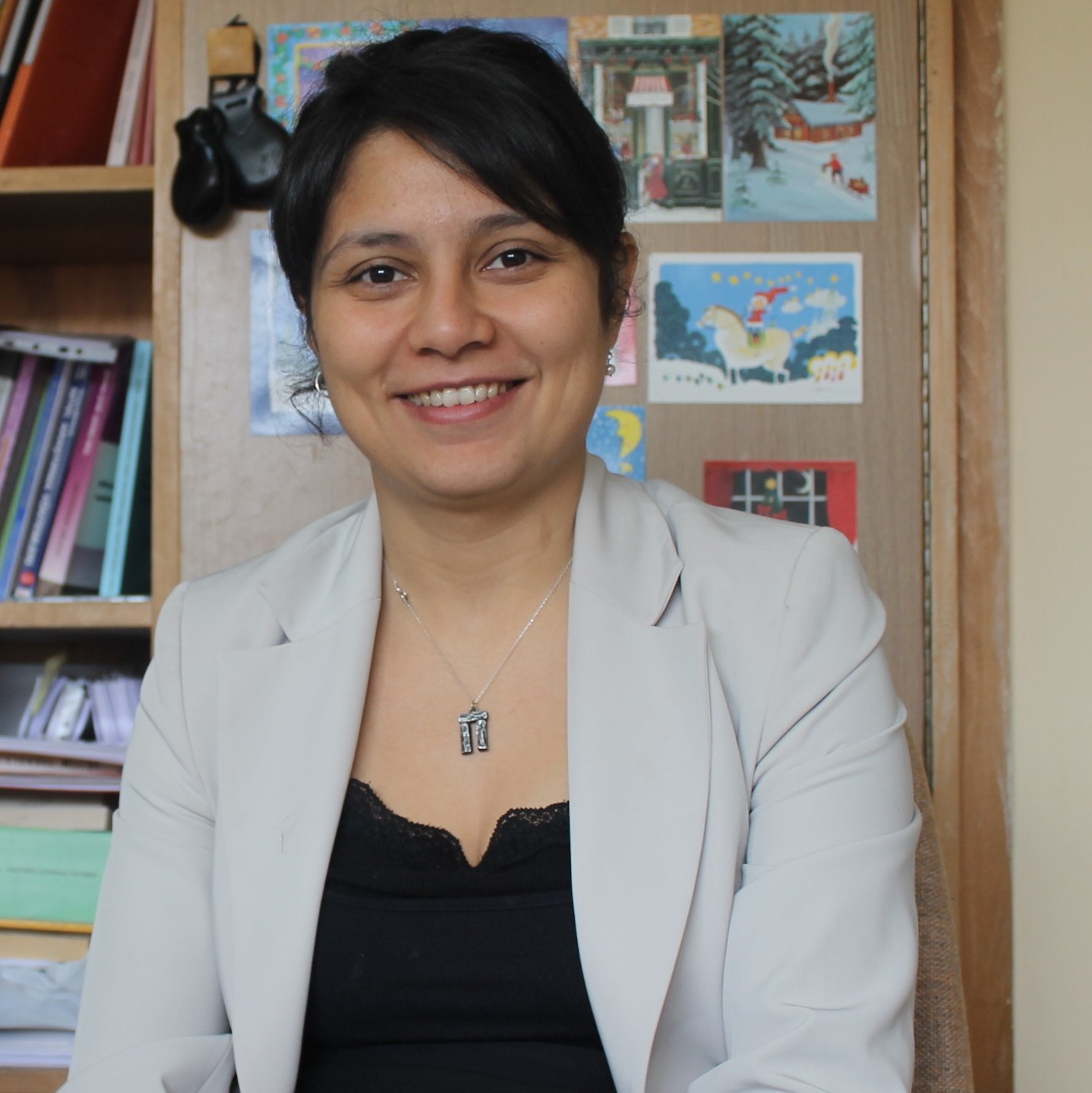
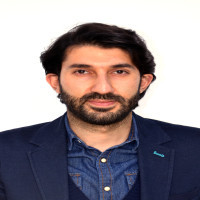

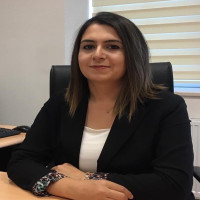
Issue Reviewers
Assoc. Prof. Dr. Abdullah ORMAN began his academic career in 2003 as a Research Assistant at the Graduate School of Natural and Applied Sciences, Gazi University. He received his first bachelor’s degree in Computer Systems Teaching in 2001, and his second bachelor’s degree in Computer Engineering in 2022. He completed his M.Sc. (2005) and Ph.D. (2012) degrees in Electronic-Computer Education.
Since 2018, he has been serving as a faculty member in the Department of Computer Technologies at Ankara Yıldırım Beyazıt University. Dr. ORMAN has taken part in several national and international research projects as both researcher and project coordinator.
His research interests include data mining, cybersecurity, computer networks, big data analytics, and intelligent transportation systems. He has published articles in peer-reviewed journals, presented papers at international conferences, and contributed to various scientific and academic activities.

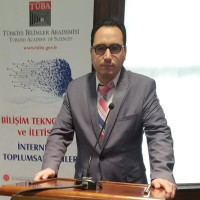

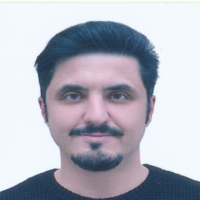


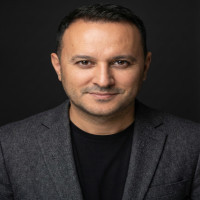
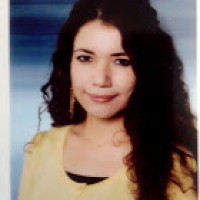
Educational Technology and Computing
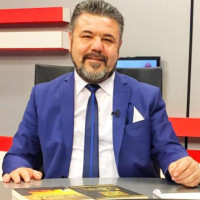
1977 yılında Konya’nın Beyşehir İlçesi’nde dünyaya gelen Muşmal, ilk (1987), Orta (1990) ve Lise öğrenimini Beyşehir’de tamamladı (1993). Lisans eğitimini 1993-1997 yılları arasında Selçuk Üniversitesi Fen-Edebiyat Fakültesi Tarih Bölümünde tamamlayan Muşmal, Milli Eğitim Bakanlığı’nca Aksaray İli Güzelyurt İlçesi Ilısu Kasabası İlköğretim Okuluna Sosyal Bilgiler Öğretmeni olarak atandı. Aynı yıl Yüksek Lisans ve Araştırma Görevlisi sınavlarında başarılı oldu ve 1998 yılında, SÜSBE Tarih Anabilim Dalı Yeniçağ Tarihi Bilim Dalında göreve başladı. 1999 yılında aynı üniversitenin tarih bölümünde görevlendirilen Muşmal, SÜSBE Tarih Anabilim Dalı Yeniçağ Tarihi Bilim Dalında Doç. Dr. Bayram Ürekli’nin danışmanlığında “XVII. Yüzyılın İlk Yarısında Konya’da Sosyal ve Ekonomik Hayat (1640-1650)” adındaki çalışmasıyla yüksek lisansını tamamladı (2000). Aynı enstitüde Prof. Dr. Bayram Ürekli’nin danışmanlığında “XIX. Yüzyılın İlk Yarısında Beyşehir ve Çevresi’nin Sosyal ve Ekonomik Yapısı (1790-1864)” isimli çalışmasıyla doktorasını bitirdi (2005). 2006 yılında vatani görevini yerine getiren Muşmal, 2007 yılı Ocak ayında, Selçuk Üniversitesi Fen-Edebiyat Fakültesi Tarih Bölümü Yakınçağ Tarihi kürsüsüne Yrd. Doç. Dr. olarak atanmış, aynı alanda 28 Ocak 2011 tarihinde Doçent, 16 Ocak 2017’tarihinde Profesör olmuştur. 2018 yılı başında Karamanoğlu Mehmetbey Üniversitesi Edebiyat Fakültesi Tarih Bölümü’nde görevlendirilen Muşmal, 2018 yılı başından 6 Ekim 2022 tarihine kadar Yakınçağ Tarihi Anabilim Dalı Başkanı ve Edebiyat Fakültesi Dekanı olarak görev yapmıştır. Prof. Dr. Hüseyin Muşmal, aynı üniversitede 2021-2022 yılları arasında 1 yıl Rektör Yardımcılığı görevinde bulunmuş, 6 Ekim 2022 tarihinden itibaren kadrosunun bulunduğu Selçuk Üniversitesi Edebiyat Fakültesi Tarih Bölümü’ndeki görevine geri dönmüştür. Muşmal, Konya Valiliği’nin 2017 tarihli 857 sayılı oluruyla Cumhurbaşkanlığımız Himayesinde gerçekleştirilen “Türkiye Selçuklu Sultanlarına ait Naaşların Osteoarkeolojik İncelemesi” projesinde Bilim ve Yayın Kurulunda çalışmaktadır. Yazar aynı zamanda Konya Büyükşehir Belediye’nin Kültür ve Turizm Envanteri projesinde yürütücülük yapmaktadır.
Prof. Dr. Hüseyin Muşmal’ın Yabancıların İzinde Osmanlı: Konya ve Çevresinde Araştırma Yapan Yabancılar (1876-1914) isimli ilk kitabı 2009 yılı Nisan ayında Konya’da Me-Sa yayınları arasından çıkmış, Osmanlı Eski Eser Politikası: Konya Vilayeti Örneği (1876-1914) ismindeki ikinci kitabı ise Kömen Yayınları arasında 2009 yılı ekim ayında yayımlanmıştır. Alanındaki diğer kitabı Yüksek Lisans Öğrencisi Berna Burcu Korucu ile birlikte, Beyşehir Gölü ve Adaları'nda Hayat adıyla 2014 yılında Palet yayınları arasında, uzmanlık alanıyla ilgili dördüncü kitabı ise Doktora Öğrencisi İrem Gürbüz ile birlikte Sultanın Camisi: Aziziye ismiyle 2020 yılında, Karatay Belediyesi tarafından yayımlanmıştır. 2021 yılı Nisan ayında Selenge Yayınları arasında, Doktora Öğrencisi Hasret Gümüş ile birlikte Türkiye’de Müzecilik 1839-1938 isimli eseri yayımlanan Muşmal’ın aynı yazarla hazırladığı Türkiye’de Eski Eser Kaçakçılığı adlı çalışması da 2022 yılı Kasım ayında yayımlanmıştır. Yazarın alanında 8. kitabı 2021 yılı sonunda Prof. Dr. Alaattin Aköz ve Ar. Gör. Emre Koç ile birlikte çıkardığı Yunus Emre Kirişçi Baba isimli eseridir. Muşmal’ın akademideki önemli çalışmaları Osmanlı dönemi şehir tarihi, eski eser politikası ve arkeolojik faaliyetler gibi alanlarda olup bu konular üzerine yazılmış 100’ün üzerinde ulusal, uluslararası makaleleri ve tebliğleri vardır.
Prof. Dr. Hüseyin Muşmal, çok sayıda özgün eser ve makalelerinin dışında 12 ayrı kitaba da editörlük yapmıştır. 2022 yılında Karaman’da Yunus Emre Araştırmaları ile Türk Dili ve Kültürü Araştırmaları isimli iki ayrı kitaba editörlük yapan Muşmal, 2021 yılında, Beyşehir (Tarih, Kültür, Sanat, Turizm, Sanayi ve Ticaret Şehri), 2019 yılında Karaman Araştırmaları, I (Arkeoloji, Sanat Tarihi, Tarih), Karaman Araştırmaları, II, (Coğrafya, Dil ve Edebiyat, Gastronomi, Güzel Sanatlar ve İletişim, İlahiyat, Felsefe, Sosyoloji, İktisat, İşletme, Kamu Yönetimi, Siyaset Bilimi, Uluslararası İlişkiler), 2018 yılında Ermenek Araştırmaları, I, (Arkeoloji, Sanat Tarihi, Tarih), Ermenek Araştırmaları, II, (Coğrafya, Dil ve Edebiyat, Gastronomi, Güzel Sanatlar ve İletişim, İlahiyat, Felsefe, Sosyoloji, İktisat, İşletme, Kamu Yönetimi, Siyaset Bilimi, Uluslararası İlişkiler), 2017 yılında Osmanlı Araştırmaları, 2, Doğu ve Batı Türklüğünün Ortak Tarihî Devirleri ve Münasebetleri (Toplum-Ekonomi), Osmanlı Araştırmaları, 2, Doğu ve Batı Türklüğünün Ortak Tarihî Devirleri ve Münasebetleri, (Siyaset, Yönetim, Din), Palet Yayınları, Osmanlı Araştırmaları, 2, Doğu ve Batı Türklüğünün Ortak Tarihi Devirleri ve Münasebetleri, (Edebiyat, Kültür, Sanat), 2016 yılında Uluslararası Osmanlı Araştırmalarında Yeni Eğilimler Kongresi Bildiri Kitabı ve 2010 yılında Das Erste Internationale Symposium zu den Duetsch Türkishen Historichen Kulturellen Beziehungen isimli bildiri kitabı olmak üzerinde alanında çok sayıda kitaba editörlük yapmıştır.
Prof. Dr. Hüseyin Muşmal, ayrıca şiir, hikâye, deneme gibi alanlarda da ürünler vermekte, bazı mahalli gazete ve internet sitelerinde köşe yazıları yazmaktadır. Muşmal, Türkiye Yazarlar Birliği Konya Şubesi üyesidir.

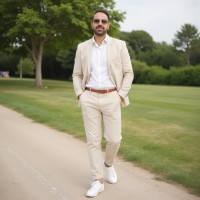
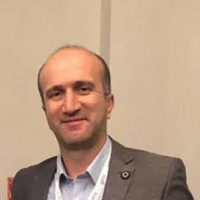
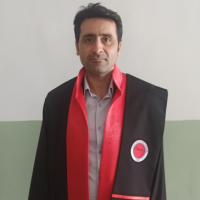

Dr. Veysel Bilal Arslankara received his Bachelor's and Master's degrees from Necmettin Erbakan University and his PhD degree from Hacettepe University in Computer Education and Instructional Technologies. His research interests include online learning environments, virtual risks, instructional design, material development, digital games, robotic coding, thinking skills and generative artificial intelligence in education.
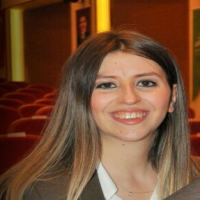
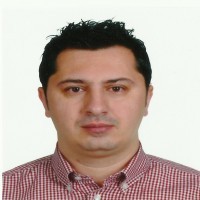
Çağatay Benhür, 10.06.1974 tarihinde Ankara’da doğdu. 1992 yılında Ankara Bahçelievler Deneme Lisesinden mezun oldu. 1993-1997 tarihleri arasında Selçuk Üniversitesi Fen Edebiyat Fakültesi Tarih Bölümünde eğitim gördü. 1998-2001 tarihleri arasında Selçuk Üniversitesi Sosyal Bilimler Enstitüsü Atatürk İlkeleri ve İnkılap Tarihi Bilim Dalında yüksek lisansını tamamladı. 2001-2008 tarihleri arasında Selçuk Üniversitesi Sosyal Bilimler Enstitüsü Atatürk İlkeleri ve İnkılap Tarihi Bilim Dalında doktora eğitimi gördü. 1998-2009 yılları arasında Selçuk Üniversitesi Fen-Edebiyat Fakültesi Tarih Bölümünde Araştırma Görevlisi olarak çalıştı. 2009 yılından beridir de Selçuk Üniversitesi Edebiyat Fakültesi Tarih Bölümünde öğretim üyesi olarak görev yapmaktadır (2024 yılından beri Profesör). Bu arada 2002-2003 öğretim yılında Ukrayna Simferopol Pedagoji Üniversitesi Türkoloji Bölümünde konuk öğretim görevlisi olarak çalıştı. Kazakistan Kızılorda Korkut Ata Üniversitesi’nde dersler verdi. Berlin Freie Üniversitesi ve Prag Karlova Üniversitelerinde araştırmacı olarak bulundu. Askerliğini, Bursa İl Jandarma Alay Komutanlığında 2009 yılında kısa dönem olarak yaptı. İngilizce ve Rusça bilen Çağatay Benhür, evli ve 2 çocuk sahibidir.
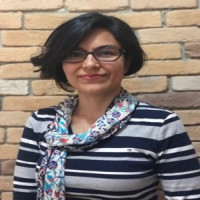
The researcher graduated from Anadolu University, Faculty of Education, Computer Education and Instructional Technologies Department in 2007. In 2012, she received her PhD in "Computer and Instructional Technologies Education" from Anadolu University. The author, who worked at Eskişehir Osmangazi University between 2009 and 2013, continues her career at Çanakkale Onsekiz Mart University since 2013. She worked as a visiting researcher at Ohio State University between 2015-2016. The author, who received her associate professorship in the same field in 2018, has articles, papers, book chapters and projects that she has worked on in the field of educational technologies. The author's fields of work are technology integration into education, innovation-decision processes, instructional design, professional development training for technology integration.

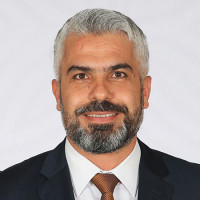
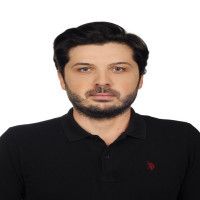
Aim & Scope
The primary purpose of the Journal of Teacher Education and Lifelong Learning (TELL) is to bring together all teacher education areas and lifelong learning-themed studies with readers.
Journal of Teacher Education and Lifelong Learning (TELL) publishes research employing a variety of qualitative and quantitative methods and mixed approaches which take account of how participants can become involved in research processes in all areas of the education field, amongst others, inclusive education, curriculum issues and the like instructional technology, educational psychology, guidance and counseling, educational administration, science education, social science education, art education… The journal aims to increase understanding of all teacher education areas and lifelong learning-themed studies with readers.
TELL is an open-access journal that publishes high-quality articles in English. All articles published in TELL will be peer-reviewed.
TELL is a free academic journal, and it is published twice a year (one volume per year) in June and December.
TELL is now a Crossref member. The DOI number will be available now.
*TELL has been accepted into the EBSCO H.W. Wilson Education Fulltext database, and the agreement was signed on 21 June 2022.
The scope of the Journal of Teacher Education and Lifelong Learning (TELL) ;
• Related to Teacher Education studies, implementations, problems, solutions, experiences, etc.
• Lifelong Learning studies
Author Guidelines
Click for the manuscript template.
Originality Report and Title Page must be uploaded with the manuscript.
GENERAL GUIDELINES
The material must be original, reflect the integrity expected of scholarly communication, and demonstrate coherence and unity, making the paper understandable and interesting. Before submitting an article, please review the following suggestions. Original manuscripts received in the correct form serve to expedite the review process; others will be returned to the author. Spelling, punctuation, sentence structure, and the mechanical elements of arrangements, spacing, length, and consistency of usage in form and descriptions should be studied before submission. Written manuscripts should be in English. Manuscript must conform to the style of the Publication Manual of the American Psychological Association (APA), 7th Edition. Manuscripts should be double-spaced, and font face must be Times New Roman 11 point. Paper Size must be A4 (21×29.7) (top, bottom, left, and right 2.5cm space).
Language
Manuscript language must be English
***If the author(s) wishes, after the referee process is completed, the article can be published in 2 languages, provided that the priority is English.
Copyright
All published articles in TELL are published under a Creative Commons Attribution License.
Format
Submit your manuscript in WORD FORMAT – Microsoft Word (.doc or docx ). Do not use word processing options/tools, such as strike-through, hidden text, comments, merges, etc. Due to the academic focus of this publication, the use of personal pronouns (I, we, etc.) and present tense is strongly discouraged.
Length
Because this is an electronic journal, the length of papers may vary. The size of your essay should be appropriate to the topic and focus.
Originality
All manuscripts must be original. No manuscript that has already been published or is being considered by another magazine or journal will be considered. However, it will be regarded as if the work described in conference proceedings is substantially revised and extended. Submission of a manuscript represents certification by the author that the article is not being considered nor has been published elsewhere.
Abstract
Each article should include an informative, comprehensive abstract of 150 to 250 words. This abstract should briefly summarize the paper's major points and the author’s summary and conclusions.
Keywords
Each article should include five keywords.
Credits and Acknowledgments
Acknowledgments or appreciation to individuals for assistance with the manuscript or the material reported should be included in the Acknowledgment at the end of the article.
Tables/Figures
All tables (composed according to APA 7th) and figures must be embedded in the manuscript near the first reference to the corresponding table. Tables and figures MUST be no wider than 500 pixels (5.25″).
References must conform to the style of the Publication Manual of the APA 7th Edition. All reference titles from other languages should be translated into English and accompanied by the original title.
Cite references in the text.
References are cited in the text in alphabetical order (the same way they appear in the reference list), separated by a semi-colon. (Korkmaz, 2013; Nel, 2012). Name both authors in the signal phrase or the parentheses each time you cite the work. Use the word ‘and’ between the authors’ names within the text and use ‘&’ in the parentheses. Research by Korkmaz and Nel (2001) showed… (Korkmaz & Nel, 2004)
Three or more authors
When using the reference the first time, all other names need to be listed, and after that, use the first author’s name followed by et al. in the signal phrase or parentheses. Usta et al. (2011) argued… (Usta et al., 2011)
Citing indirect sources
If you use a source cited in another source, name the source in your signal phrase. List the secondary source in your reference list and include the secondary source in the parentheses. Johnson argued that… (as cited in Korkmaz, 2009, p. 71) (Note: The use of secondary sources should be limited).
Organize references
References are listed in alphabetical order.
Book.
Author, A.A. (Year of publication). Title of work: Capital letter also for subtitle. Location: Publisher.
Author, A.A. (Year of publication). Title of work: Subtitle. Retrieved from http://www.xxxxxx
Author, A.A. (Year of publication). Title of work: Subtitle. doi:xxxxxxxxxxx
Chapter in an edited book
Author, A.A., & Author, B.B. (Year of publication). Title of chapter. In A. Editor & B. Editor (Eds.), Title of book (pages of chapter). Location: Publisher.
Author, A.A., & Author, B.B. (Year of publication). Title of chapter. In A. Editor & B. Editor (Eds.), Title of book (pages of chapter). Retrieved from http://www.xxxxx
Author, A.A., & Author, B.B. (Year of publication). Title of chapter. In A. Editor & B. Editor (Eds.), Title of book (pages of chapter). Location: Publisher. doi:xxxxxxxxxx
Journal article.
Author, A.A., Author, B.B., & Author, C.C. (Year). Title of article. Title of Periodical, volume number, pp–pp. Doi:xx.xxxxxxxxxx
Authors are named by last name followed by initials (closed up); publication year goes between parentheses, followed by a full stop (period). Only the first word and proper nouns in the title and subtitle are capitalized. The periodical title has the main words capitalized, followed by the volume number, which, with the title, is also italicized, and then the DOI. Provide the issue number ONLY if each journal issue begins on page 1. In such cases, it goes in parentheses: Journal, 4(1), pp–pp. If the DOI is unavailable and the reference was retrieved online, give the URL of the journal home page. No retrieval date is needed.
Symposium
Contributor, C. (Year, Month). Title of contribution. In C. Chairperson (Chair), Title of the symposium. The symposium was conducted at the organization's name and location meeting.
The conference paper abstract was retrieved online
Author, A.A. (2010, June). Title of article. The paper was presented at the conference's name and location. Abstract retrieved from http://www.conference.org/abstracts_2007.htm
Dissertation or thesis.
Author, A.A. (Year). Title of thesis. (Unpublished master’s thesis). University of Missouri, Columbia.
Ethical Principles and Publication Policy
Journal of Teacher Education and Lifelong Learning (TELL) is a double-blind, peer-reviewed international academic journal. TELL is committed to the academic community; in this regard, it stands for meeting the highest standards of publication ethics. In contrast, publication malpractice is strictly prohibited by all possible measures. That’s why it is necessary to agree upon standards of expected ethical behavior for all parties involved in publishing: the author, the journal editor, the peer reviewer, and the publisher. Our ethical statements are based on COPE’s Best Practice Guidelines for Journal Editors.
For Editors
The journal editor is responsible for deciding which of the articles submitted to the journal should be published. The editor may be guided by the policies of the journal’s editorial board and constrained by such legal requirements as shall then be in force regarding libel, copyright infringement, and plagiarism. The editor may confer with other editors or reviewers in making this decision. An editor will evaluate manuscripts for their intellectual content without regard to the author's race, gender, sexual orientation, religious belief, ethnic origin, citizenship, or political philosophy. The editor and any editorial staff must not disclose any information about a submitted manuscript to anyone other than the corresponding author, reviewers, potential reviewers, other editorial advisers, and the publisher, as appropriate. Disclosure and conflicts of interest unpublished materials disclosed in a submitted manuscript must not be used in an editor’s own research without the author's express written consent.
For Reviewers
Peer review assists the editor in making editorial decisions and, through the editorial communications with the author, may also assist the author in improving the paper. Any selected referee who feels unqualified to review the research reported in a manuscript or knows its prompt review will be impossible should notify the editor and excuse himself from the review process. Any manuscripts received for review must be treated as confidential documents. They must not be shown to or discussed with others except as authorized by the editor. Reviews should be conducted objectively. Personal criticism of the author is inappropriate. Referees should express their views clearly with supporting arguments. Acknowledgment of Sources Reviewers should identify relevant published work that the authors have not cited. Any statement that an observation, derivation, or argument had been previously reported should be accompanied by the appropriate citation. A reviewer should also call to the editor’s attention any substantial similarity or overlap between the manuscript under consideration and any other published paper they know personally. Privileged information or ideas obtained through peer review must be kept confidential and not used for personal advantage. Reviewers should not consider manuscripts with conflicts of interest resulting from competitive, collaborative, or other relationships or connections with any authors, companies, or institutions connected to the papers.
For Authors
Authors of reports of original research should present an honest account of the work performed and a discussion of its significance in the field of Teacher Education and Lifelong Learning. Underlying data and ways of interpreting these should be represented transparently in the paper. A paper should contain sufficient detail and references to permit others to judge the value of the work. Fraudulent or knowingly inaccurate statements constitute unethical behavior and are unacceptable. Authors are asked to provide the raw data in connection with a paper for editorial review and should be prepared to provide public access to such data (consistent with the ALPSP-STM Statement on Data and Databases), if practicable, and should, in any event, be designed to retain such data for a reasonable time after publication. The authors should ensure that they have written entirely original works, and if the authors have used the work and words of others, that this has been appropriately cited or quoted. Multiple, redundant, or concurrent publications: an author should not generally publish manuscripts describing essentially the same research in more than one journal or primary magazine. Submitting the same manuscript to multiple journals concurrently constitutes unacceptable publishing behavior. Proper acknowledgment of the work of others must always be given. Authors should cite publications that have influenced the nature of the reported work. Authorship should be limited to those who have contributed significantly to the conception, design, execution, or interpretation of the reported study. All those who have made significant contributions should be listed as co-authors. Where others have participated in certain substantive aspects of the research project, they should be acknowledged or listed as contributors. The corresponding author should ensure that all appropriate co-authors and no inappropriate co-authors are included in the paper and that all co-authors have seen and approved the final version of the paper and have agreed to its submission for publication. All authors should disclose in their manuscript any financial or other substantive conflict of interest that might be construed to influence the results or interpretation of their manuscript. All sources of financial support for the project should be disclosed. Authors can not make any changes to the published manuscript electronically. Therefore, authors must carefully review and correct any errors on galley proof.
Author/s declare that:
The author/s declares the presence of ethics statements needed for ethical research using human subjects. Otherwise, they provide the necessary documents.
a) Conflict of Interest: They have no conflict of interest.
b) Research involving human participants and animals: This study contains no studies with human participants or animals performed by authors. This article does not contain any studies involving animals performed by any of the authors.
c) Informed consent: Informed consent was obtained from all participants involved in the study.
Publication Policy
Journal of Teacher Education and Lifelong Learning (TELL) is published in June and December; articles with completed review processes can be published in advance in the form of an early preview, along with DOI (Digital Object Identifier), volume, issue, and page numbers. The early view version is the final version; no changes are made after publication.
Related to Plagiarism
Journal of Teacher Education and Lifelong Learning (TELL) is a peer-reviewed and indexed journal with ISSN: 2687-5713 published online since 2019. The journal is strictly against any unethical act of copying or plagiarism. All manuscripts submitted for publication to TELL are cross-checked for plagiarism using iThenticate software. Manuscripts found plagiarized during the initial stages of review are outright rejected and not considered for publication in the journal. If a manuscript is found to be plagiarized after publication, the Editor-in-Chief will conduct a preliminary investigation, possibly with the help of a suitable committee. If the manuscript is found to be plagiarized beyond the acceptable limits, the journal will contact the author’s Institute / College / University and Funding Agency, if there is any. A determination of misconduct will lead TELL to run a bi-directional link online to the original paper to note the plagiarism and provide a reference to the plagiarized material. The document containing the plagiarism will also be marked on each page of the PDF. Upon determination of the extent of plagiarism, the paper may also be formally retracted.
Price Policy
Journal of Teacher Education and Lifelong Learning (TELL) does not charge any fees for the submission, evaluation and publication of the articles. Authors do not pay article processing fee for the studies they submit to the journal.





